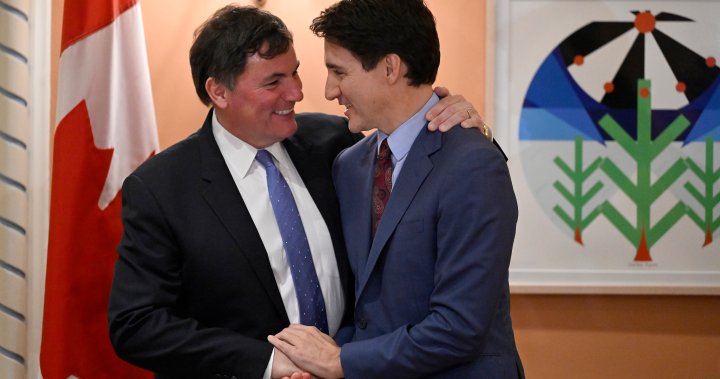Paragraph 1: Trudeau’s Cabinet Support and Leadership Continuity
Prime Minister Justin Trudeau retains the full confidence of his cabinet, as confirmed by newly appointed Finance Minister Dominic LeBlanc. Amidst recent political upheaval within the government, triggered by the unexpected resignation of former Finance Minister Chrystia Freeland, LeBlanc’s assertion of unwavering cabinet support serves as a critical affirmation of Trudeau’s continued leadership. This public declaration of confidence aims to quell speculation regarding potential leadership changes and project an image of stability within the government. LeBlanc’s unequivocal "yes" in response to questions about cabinet support underscores the unity of the ministerial team behind Trudeau’s leadership.
Paragraph 2: LeBlanc’s Dismissal of Leadership Speculation
Finance Minister LeBlanc firmly dismissed any contemplation of a leadership transition, emphasizing Trudeau’s robust cabinet support. He strategically redirected questions about his own potential leadership aspirations, highlighting the lack of any current need for such considerations. By linking the question of future leadership to Trudeau’s eventual decision to step down, LeBlanc effectively sidestepped speculation and reinforced the message of continuity under the current Prime Minister. This proactive approach aims to minimize distractions caused by leadership rumors and maintain focus on the government’s agenda.
Paragraph 3: Addressing Internal Dissent and Prime Ministerial Response
Acknowledging expressions of discontent from some Liberal MPs, LeBlanc revealed that these concerns were directly communicated to Trudeau during a caucus meeting. He portrayed the Prime Minister as receptive and responsive, emphasizing Trudeau’s engagement with the raised issues and commitment to reflection. This depiction of a listening and responsive leader aims to address concerns about internal dissent and project an image of a government that values open communication and internal dialogue. While acknowledging the existence of differing opinions, LeBlanc’s statement also subtly emphasizes the importance of caucus unity and collective responsibility.
Paragraph 4: Virani’s Implicit Expression of Confidence
Justice Minister Arif Virani, while not explicitly stating his confidence in Trudeau’s continued leadership, expressed absolute faith in the Prime Minister’s guidance related to his ministerial responsibilities. This indirect affirmation of confidence, though not as direct as LeBlanc’s statement, nonetheless contributes to the overall message of support for Trudeau’s leadership. Virani’s focus on his own portfolio and the Prime Minister’s direction within it can be interpreted as an implicit endorsement of Trudeau’s overall leadership.
Paragraph 5: The Impact of Freeland’s Resignation and LeBlanc’s Appointment
The unexpected resignation of Chrystia Freeland as finance minister, just hours before the scheduled presentation of the fall economic statement, created significant political turbulence within the Trudeau government. This abrupt departure, combined with its timing, fueled speculation about internal divisions and potential leadership challenges. The swift appointment of Dominic LeBlanc, a seasoned cabinet member and long-serving MP, as the new finance minister aimed to address the immediate leadership vacuum and project an image of stability and continuity. LeBlanc’s extensive experience and established political credentials were intended to reassure markets and the public during this period of uncertainty.
Paragraph 6: Navigating Political Uncertainty and Maintaining Stability
The combined statements of LeBlanc and Virani, along with the rapid appointment of a new finance minister, represent a concerted effort by the Trudeau government to navigate a period of political uncertainty and maintain an image of stability. The emphasis on cabinet support, the dismissal of leadership speculation, and the portrayal of a responsive Prime Minister are all part of a broader strategy to project confidence and unity. While internal dissent and unexpected resignations create challenges, the government’s response aims to minimize disruption and maintain focus on its governing agenda. The success of this strategy will depend on the government’s ability to address underlying concerns, maintain party unity, and effectively communicate its message to the Canadian public.

